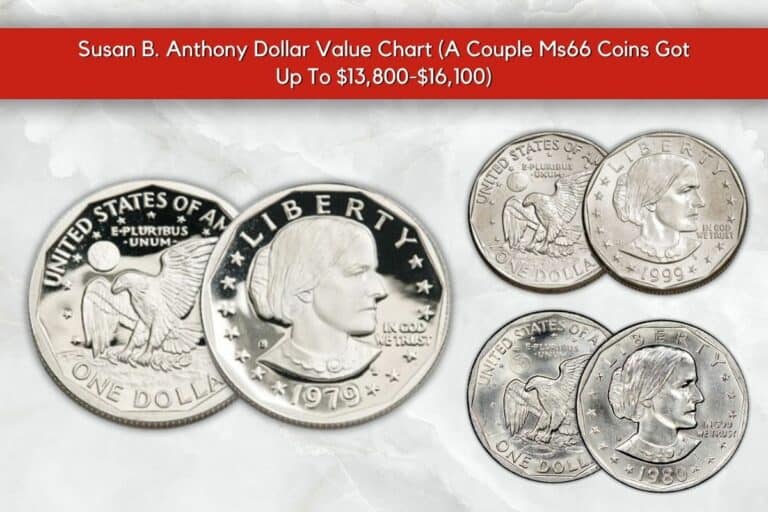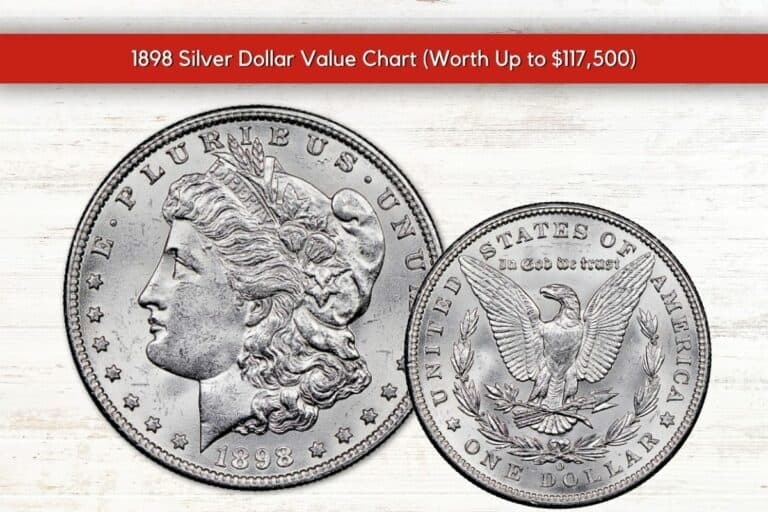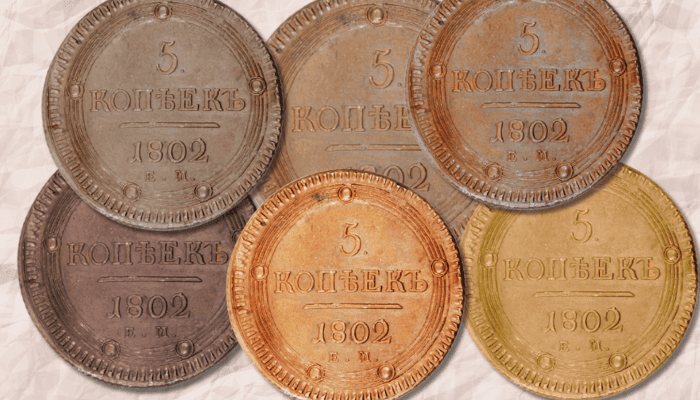A dime is a small coin worth 10 cents. That is, if it were just a regular dime you might find in your pocket. But vintage dimes, like the 1966 dime, can be worth much more to avid collectors. The historical time period saw many crucial events unfold. The U.S. sent the first spacecraft to orbit the moon, musical icons The Beatles and Bob Dylan released seminal albums, and civil rights activists marched for equal rights. A 1966 dime is a physical representation of this era in history, making it a valuable treasure for collectors.
Collectors all over the world seek out vintage dimes, and 1966 is no different, although there is a big caveat. Despite its crazy-high mintage of 1 billion and 300 hundred million, very few have been sold at auctions in the past 2 decades.
The reason is that dimes tend to not hold up well over time, with most being in poor condition by now. While this means that those 1966 dimes that are still in good shape are highly coveted and valuable, it also means you won’t find too many of them on the market.
In this article, you are going to learn everything about the 1966 dime. Its history, how to evaluate its condition, and where to find its value on the market.
The History of the 1966 Dime
In 1964 the dime went through a change in composition. Before, it was made of 90% silver and 10% copper, but in 1964 the dime (along with other coins) transitioned to a clad composition. This change was made to save on the high cost of silver during that time period.
1966 was a special year for dimes, as it marked the switch from 90% silver dimes to a mixture of copper and nickel. The 1966 dime is composed of an outer layer of 75% copper and 25% nickel bonded to an inner core of 100% copper. This change in composition also led to a change in the dime’s appearance. The new dimes have a smooth edge and lack the ridges that were present on previous dimes, known as “reeds.”
The public was not happy about the change, as it meant their dimes were worth less for their metal value. But it was a necessary move, as the demand for silver had increased and the U.S. government needed to save their resources.
1966 saw no design changes for the dime, with it still featuring President Franklin D. Roosevelt on the front and an olive branch, a torch, and an oak branch on the back.
Evaluating a 1966 Dime
The first step in finding the value of a 1966 dime is identifying its type. The United States Mint released two types of dimes in 1966: one with a “D” mint mark indicating it was made at the Denver mint and one without a mint mark, indicating it was made at the Philadelphia mint.
The next step is evaluating its condition, also known as its grade. This can be a tricky process to do on your own, but there are resources available to assist in this process.
The Professional Coin Grading Service (PCGS) and Numismatic Guaranty Corporation (NGC) both offer tools for determining a coin’s grade. There are also books and online guides (like this one) that can help you determine the condition of your 1966 dime. The higher the grade, the more valuable your 1966 dime is. A “Good” or “Fine” grade means your dime has some wear and tear, but all of its major features are still visible. However, a “Mint State” or “Proof” grade means that your dime looks almost brand new, with no signs of wear.
One interesting thing to note about the 1966 dime is that only one coin in a non-Mint State has been sold recently, which is a sign of just how rare it is for these dimes to stay in good condition. Most of the dimes that were minted back then are probably not in the best shape now, making those that are all the more valuable.
Other things to look for include:
- Mint marks — as mentioned before, a “D” mint mark indicates it was made at the Denver mint and no mint mark means it was made at the Philadelphia mint
- Minting Errors — These can significantly increase the value of a 1966 dime. Look for things like doubling in the design, off-centered striking, and missing lettering.
- Rarity — Some 1966 dimes are rarer than others, like the 1966 SMS dime (Special Mint Set) which was only made available to collectors through sets and not released into circulation.
- Looks — While grade sort of covers this, overall appearance can also play a role in determining value. Some coins just so happen to have a nice luster, while others might have discolorations or other aspects that bring down their value.
Here’s a video showcasing a few 1966 dimes and their value:
The good news is that you don’t need a fortune to add a 1966 dime to your collection. These dimes are relatively affordable, with many selling for less than $10, even those with a grade of MS60-65.
Finding the Market Value of a 1966 Dime
Once you have evaluated your 1966 dime’s grade, it’s time to find out its value on the market. One place to start is websites like PCGS CoinFacts or NGC Coin Explorer, which both provide helpful information and recent sales data on 1966 dimes.
You can also check online auction sites like eBay to see how much others are selling their 1966 dimes for. Just remember to take these listings with a grain of salt, as they may not necessarily reflect the true value of the coin.
Another option is to consult with a professional numismatist or visit a local coin shop to get an accurate appraisal of your 1966 dime’s value.
Here’s a table with recent sales data for a few 1966 dimes in different grades, courtesy of PCGS:
| Mint | Average Circulated (Poor to Fine) | Very Fine, Extremely Fine & About uncirculated | Uncirculated & Select Uncirculated MS-60 to MS-63 | Choice & Gem Uncirculated MS-64 to MS-66 | Superb & Perfect Uncirculated MS-67 to MS-70 |
| 1966 MS | No recent sales | Around $100-$140 (1 and 2) | Only 2 recent sales, one for $6 and one for $35 | $8 to $227 | Most go for $26 up to a few hundred dollars. The record sale is for an MS68 coin that went for $2,820 |
| 1966-S Silver PR | Doesn’t exist | Doesn’t exist | Doesn’t exist | Doesn’t exist | You can spend as little as $6 up to $575. But most are priced around $30 (1, 2, and 3) |
| 1966 SMS SP | Doesn’t exist | Doesn’t exist | Doesn’t exist | Around $10-$25 (1, 2, and 3) | Prices start around $6 for SP67 grades, and go up to a few thousand dollars (1, 2, and 3), with all sort of prices inbetween (here’s a $76 sale and here’s a $334 one) |
Warning: While rare in the case of 1966 dimes, counterfeits do exist and it’s important to be aware of them when purchasing vintage coins. Look for any abnormalities or inconsistencies in the design, double check mint marks and do some research before making a purchase. Usually, counterfeiters don’t bother with these dimes as they aren’t as valuable as other coins, but it is still important to be cautious.
Collecting vintage dimes can be a fun and educational hobby, and the 1966 dime has its own unique history and characteristics that make it a worthwhile addition to any collection. Let’s now see some famous minting errors that occurred in 1966:
One of the most famous errors for this year’s dimes is the 1967 Doubled Die Obverse, which features doubling in FDR’s portrait and the word “LIBERTY.” Only a few thousand were made before the mistake was caught, making it a valuable find for collectors. Another error to watch out for is the
1966 Dime Minting Errors
Minting errors increase the value of a coin, making them highly sought after by collectors. One famous error for the 1966 dime is a misprint of the words “LIBERTY” or “IN GOD WE TRUST”, where one or more letters may be missing or doubled. Other errors to look out for include off-centered striking and a weak strike, where the design is not fully struck onto the coin.
Here are other common minting errors you should look out for:
- Misplaced die markers — These are small dots or lines that appear during the minting process and should be on the coin’s design. If they appear outside of the design, it indicates a mistake in the minting process.
- Off-centered striking — This occurs when the coin is not struck in the center, leaving part of the rim or design missing.
- Missing clad layer — The 1966 dime, like all dimes minted since 1965, is composed of a copper core and outer layers of copper-nickel. If the outer layers are missing in spots, revealing the copper core, it indicates a minting error.
- Clipped Planchet — This occurs when a portion of the metal planchet, or blank coin, is missing before striking. This results in a sliver missing from the coin’s edge.
All of these errors considerably increase the value of a 1966 dime, making them highly sought after by collectors. So, keep an eye out for any abnormalities or inconsistencies in your dimes, as you may have stumbled upon a rare and valuable find.
FAQs About the 1966 Dime
What is the composition of the 1966 dime?
The 1966 dime, like all dimes minted since 1965, is composed of a copper core and outer layers of copper-nickel.
How much is a 1966 dime worth in circulated condition?
The value of a 1966 dime in circulated condition depends on its grade and any minting errors it may have. Without any errors, a 1966 dime in “good” condition (around the equivalent of a grade of G-4) can be worth around $1.50, while an uncirculated one (around MS-60) can go for $6.
What is a 1967 Doubled Die Obverse dime?
This refers to a minting error in the 1966 dimes where the design elements, specifically FDR’s portrait and the word “LIBERTY,” appear doubled. These dimes are rare and highly valued by collectors.
Also Read:
- 1944 Dime Value Chart (Worth As Much As $11,750 )
- 1945 Dime Value Chart: Worth No More Than $100
- The Comprehensive Dimes Worth Money List (1894-S 10C Branch Mint PR66 Sold on Jan 7, 2016 For $1,997,500)
- 15 Most Valuable Roosevelt Dimes (1975-S Roosevelt Dime No-S PR68 Sold in 2019 For $456,000.00)
- Barber Dime Value Chart (Most Valuable Sold For $1,997,500!)
Wrapping Up
Finding the market value of your 1966 dime involves evaluating its grade and doing some research on recent sales data or consulting with a professional. It might be hard to find a 1966 for sale, as few have survived to the present day in good condition. But with perseverance, you might just find the missing piece of your collection.
It’s also very liberating to know most 1966 dimes don’t go for much on the open market. This means that you don’t have to worry as much about handling or storing them properly, giving you more freedom to enjoy and appreciate your vintage dimes for their unique history and characteristics.









